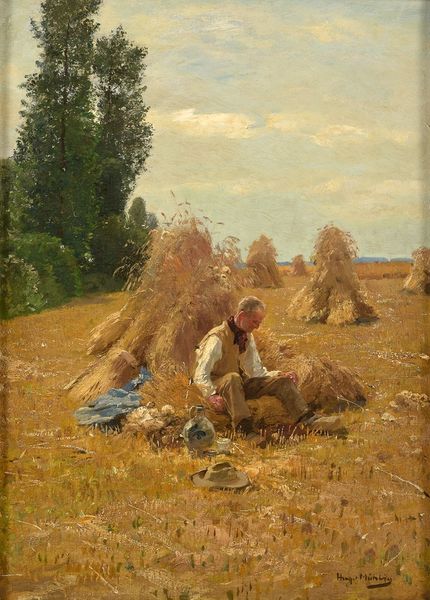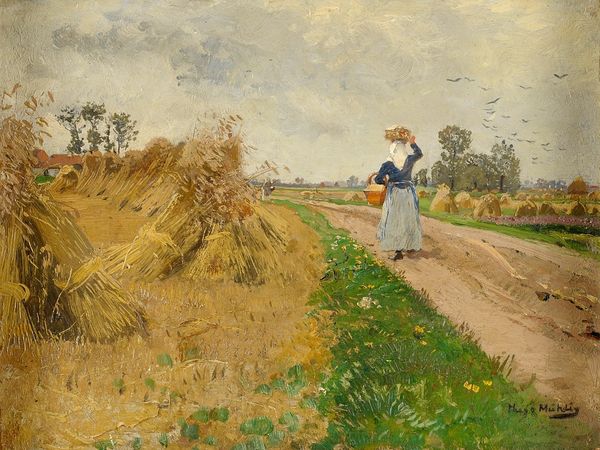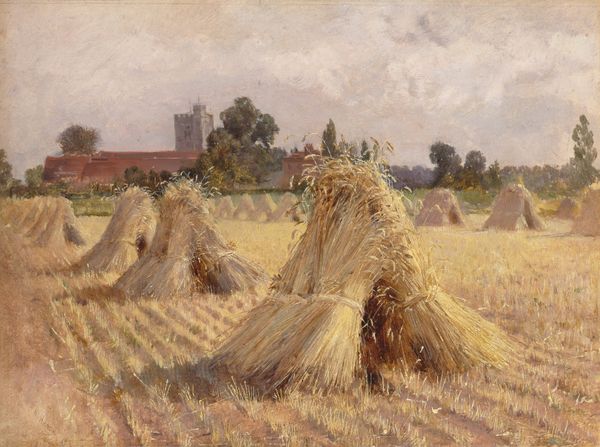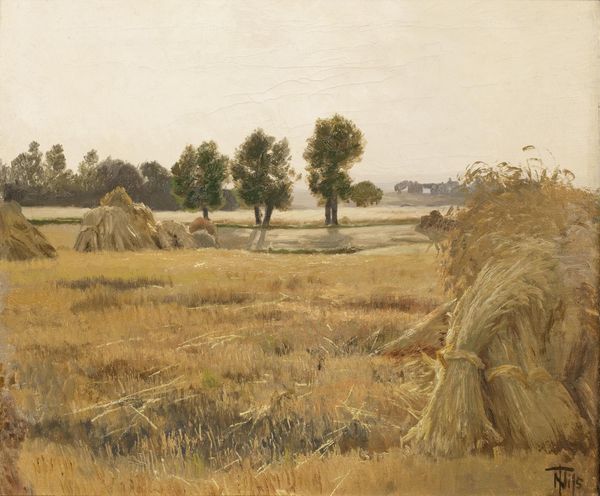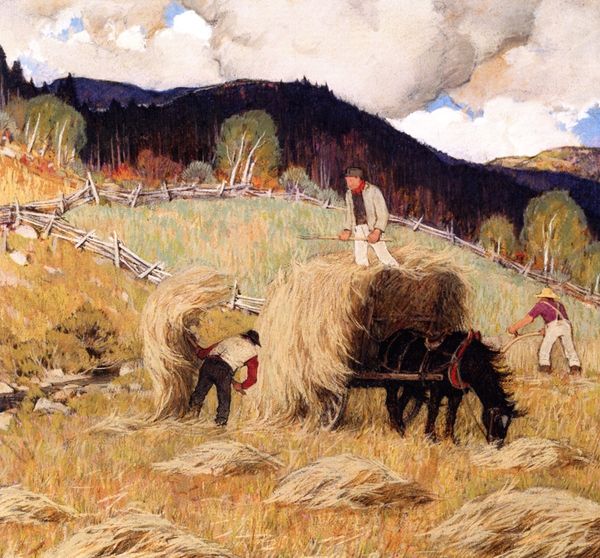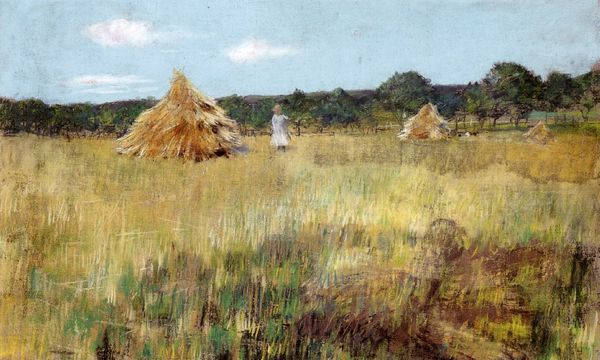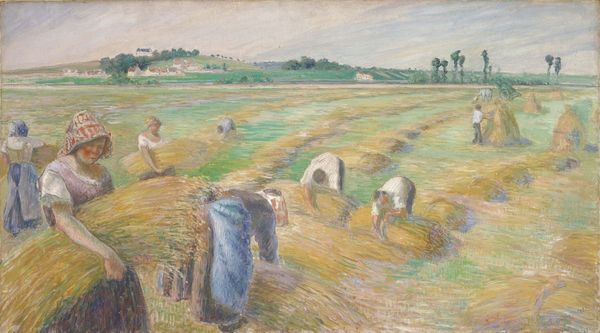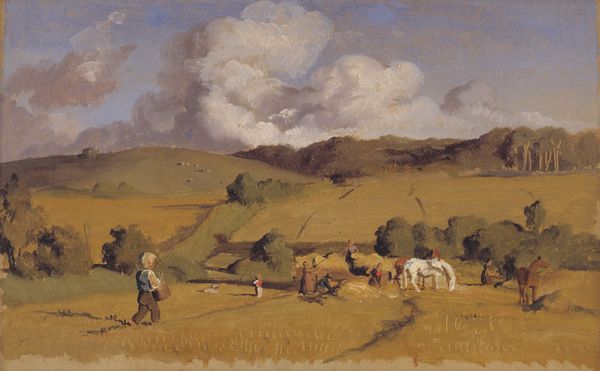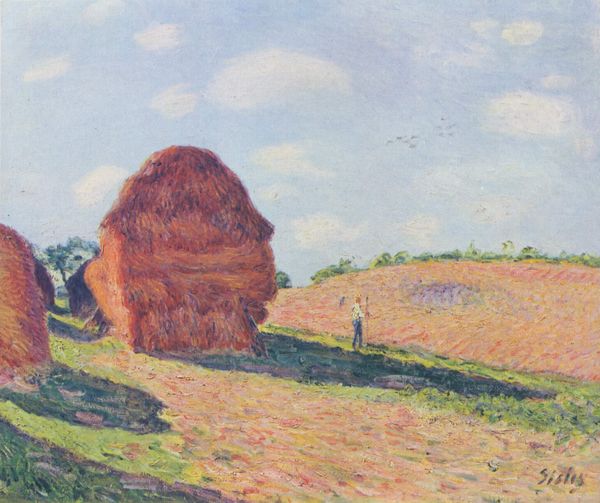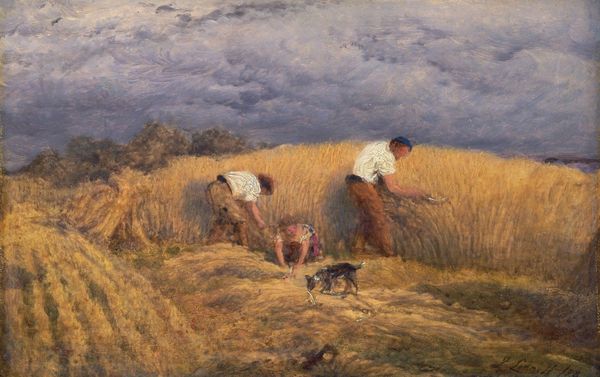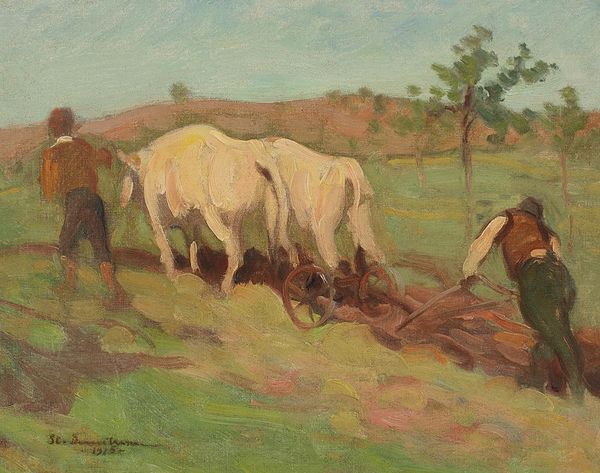
#
possibly oil pastel
#
oil painting
#
acrylic on canvas
#
green background
#
underpainting
#
painting painterly
#
watercolour bleed
#
watercolour illustration
#
mixed medium
#
watercolor
Dimensions: height 17.6 cm, width 24.8 cm, thickness 0.8 cm, depth 3.6 cm
Copyright: Rijks Museum: Open Domain
Curator: Before us is Willem de Zwart’s "Hay Wagon," a work dating roughly from 1885 to 1931. What's your immediate reaction? Editor: I'm struck by its immediacy. It feels almost like a fleeting moment captured, a snapshot of rural life imbued with a palpable sense of labor and the bounty of harvest. Curator: Observe the composition. The massive hay wagon dominates the pictorial space. De Zwart uses a high horizon line, compressing the sky, forcing our focus onto the weighty physicality of the hay and figures. Note how the light reflects off the texture of the hay itself. Editor: Yes, and haystacks often represented prosperity and hard work. There's something incredibly universal about this scene—it recalls age-old symbology of agrarian cultures. Curator: Precisely. Furthermore, analyze the painterly technique. Observe the broad, confident brushstrokes, the visible layering of paint, and the strategic use of light to define form. De Zwart does not aim for photographic realism; rather, he emphasizes the materiality of paint to convey texture and volume. Editor: Consider the emotional aspect too. There is a quiet dignity, a reverence perhaps. Hay was fundamental, providing sustenance, shelter, and warmth. And horses, a recurring symbol of strength and fertility throughout civilization, central in agriculture. The entire process and every part involved had purpose. Curator: I concur. De Zwart harnesses the raw power of the medium itself. He allows the act of painting to reveal a truth, the structure in a landscape's simple forms. And the way he arranges colors generates its own sense of reality, its own inner order. Editor: Thinking about it, "Hay Wagon," is not merely a genre scene; it is a statement on our perennial connection with earth and sustenance, mirroring collective traditions of humanity. Curator: So, through its formal elements, "Hay Wagon," communicates far more than merely rural life—a sense of enduring structural importance is what stays with me. Editor: And through its powerful symbolic connections and quiet mood, its commentary about heritage resonates long after you've stepped away.
Comments
No comments
Be the first to comment and join the conversation on the ultimate creative platform.
